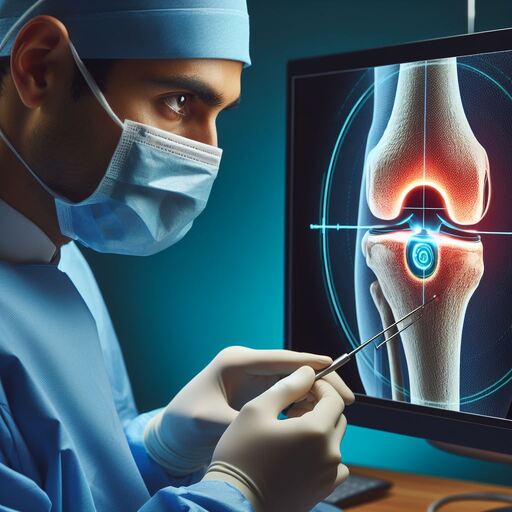How Arthroscopy Offers Precision and Clarity
How Arthroscopy Offers Precision and Clarity
A Closer Look Inside: How Arthroscopy Offers Precision and Clarity
In the realm of medical surgery, precision and minimal invasiveness are paramount to successful outcomes and swift recoveries. Arthroscopy, a surgical technique used by orthopedic surgeons to visualize, diagnose, and treat problems inside a joint, embodies these principles. Through a tiny camera inserted into the joint via a small incision, arthroscopy provides a clear and detailed view of the joint’s interior. This article delves into the mechanics of arthroscopy, its advantages over traditional surgery, and how it has revolutionized the treatment of joint disorders.
How Arthroscopy Offers Precision and Clarity
Understanding Arthroscopy
Arthroscopy involves the use of an arthroscope, a small fiber-optic viewing instrument that is inserted through a small incision in the patient’s skin into a joint. The arthroscope is equipped with a light source and a camera that sends images to a video monitor, allowing the surgeon to see inside the joint without making large incisions.
Dr. Sarah Johnson, an experienced orthopedic surgeon, explains, “Arthroscopy allows us to diagnose joint conditions with a level of detail that was previously unachievable with open surgery or radiographic imaging alone. The camera provides high-definition, magnified images, which can be crucial in diagnosing subtle abnormalities.”
The Procedure
The procedure typically starts with the administration of either general anesthesia, spinal anesthesia, or a local anesthetic, depending on the joint involved and the expected complexity of the surgery. After the anesthesia takes effect, the surgeon makes small incisions, usually about 4-5 millimeters long, around the joint. Sterile fluid is then injected to expand the joint and improve visibility.
The arthroscope is inserted through one of the incisions, and specialized instruments required for treatment are inserted through other small incisions. Common tools include probes, forceps, knives, and shavers. These instruments allow the surgeon to repair or remove damaged tissue.
How Arthroscopy Offers Precision and Clarity
Applications of Arthroscopy
Arthroscopy is most commonly used for the knee, shoulder, elbow, ankle, hip, and wrist. It can treat a variety of issues including:
- Torn surface cartilage
- ACL and ligament tears
- Carpal tunnel syndrome
- Rotator cuff tendon tears
- Impingement syndrome
- Removal of loose bone or cartilage fragments
Advantages of Arthroscopy
1. Precision and Clarity: Arthroscopy provides surgeons with an enhanced view of the joint, which is crucial for detailed diagnostic assessments and precise surgical interventions. This clarity reduces the risk of damage to surrounding tissues and ensures that only the affected areas are treated.
2. Minimized Surgical Risk: As the incisions made during arthroscopy are small, the procedure is less invasive compared to traditional open surgery. This reduces the risks associated with larger surgical wounds, such as infection and postoperative complications.
3. Faster Recovery: Patients typically experience quicker recovery times with arthroscopy. Since the procedure is less invasive, the postoperative pain is generally less severe, reducing the need for painkillers and shortening the hospital stay, often allowing patients to return home on the same day.
4. Reduced Scarring: The small incisions result in smaller scars, which are not only cosmetically preferable but also lessen the chance of forming scar tissue that can complicate recovery and affect joint function.
Challenges and Considerations
How Arthroscopy Offers Precision and Clarity
While arthroscopy offers numerous benefits, it’s not without challenges. The technique requires highly skilled surgeons who are experienced in maneuvering the instruments within the limited space of a joint. Furthermore, not all joint problems can be solved with arthroscopy, and in some cases, open joint surgery might still be the best option.
Patient Success Stories
Case Study: Laura’s Knee Recovery
How Arthroscopy Offers Precision and Clarity
Laura, a 30-year-old soccer player, suffered a complex meniscus tear. Opting for arthroscopic surgery, she underwent a procedure that not only repaired her meniscus but also allowed her to begin physiotherapy within a week after surgery. “I was amazed at how quickly I could move my knee again without pain. The small incisions healed very quickly, and the scarring is almost invisible,” she reports.
Case Study: Tom’s Shoulder Repair
Tom, a 45-year-old violinist, developed severe shoulder pain from repetitive strain and a partial rotator cuff tear. Arthroscopic surgery was used to repair his tendon, significantly reducing his recovery time and enabling a return to playing within months. “The surgery and recovery were much smoother than I had anticipated. It was crucial for me to preserve my shoulder function, and arthroscopy made that possible,” says Tom.
The Future of Arthroscopy
As technology advances, arthroscopy continues to evolve. Innovations in imaging technology and surgical instruments promise even greater precision and flexibility in the future. Moreover, developments in robotic-assisted arthroscopy are beginning to emerge, potentially allowing for even more precise manipulations and reduced human error.
How Arthroscopy Offers Precision and Clarity
Conclusion
Arthroscopy represents a significant advance in medical surgery, offering a less invasive alternative to open surgery with many benefits, including reduced recovery time and minimal scarring. By providing surgeons with a detailed view of the joint’s interior, arthroscopy allows for precise surgical interventions, making it a preferred method for diagnosing and treating joint problems. As technology progresses, the scope and efficacy of arthroscopy are expected to improve, offering new possibilities for patients seeking relief from joint pain.
